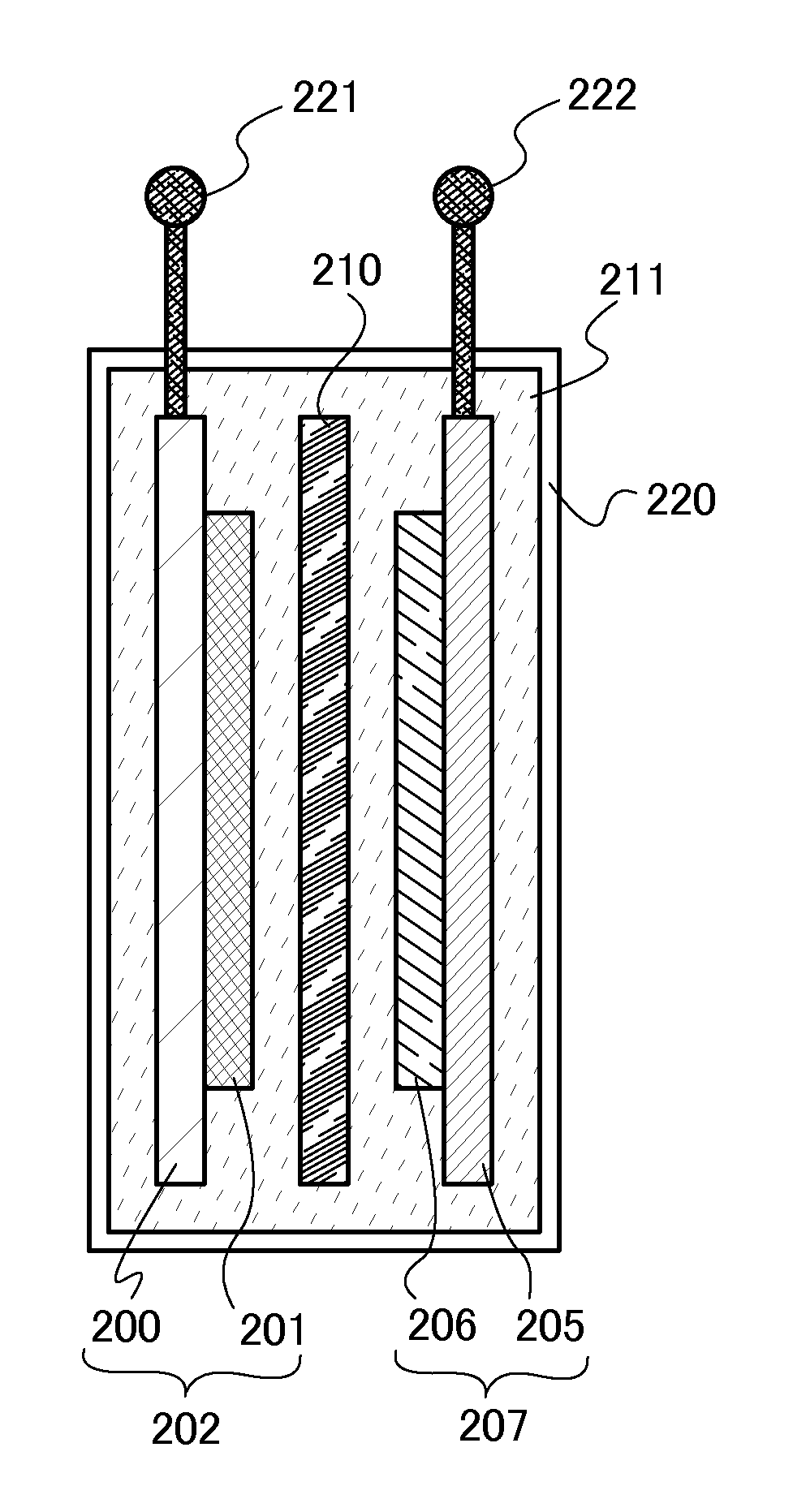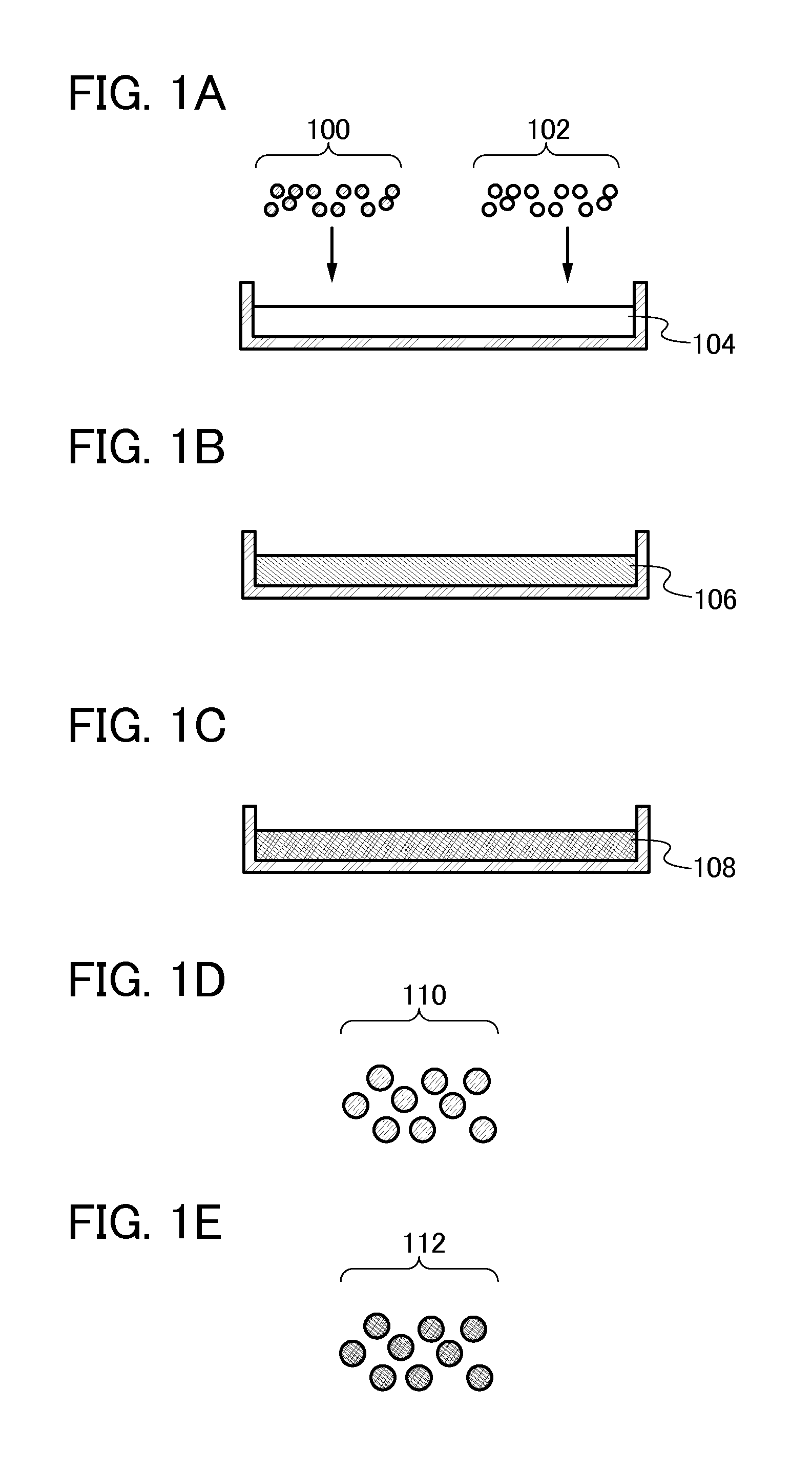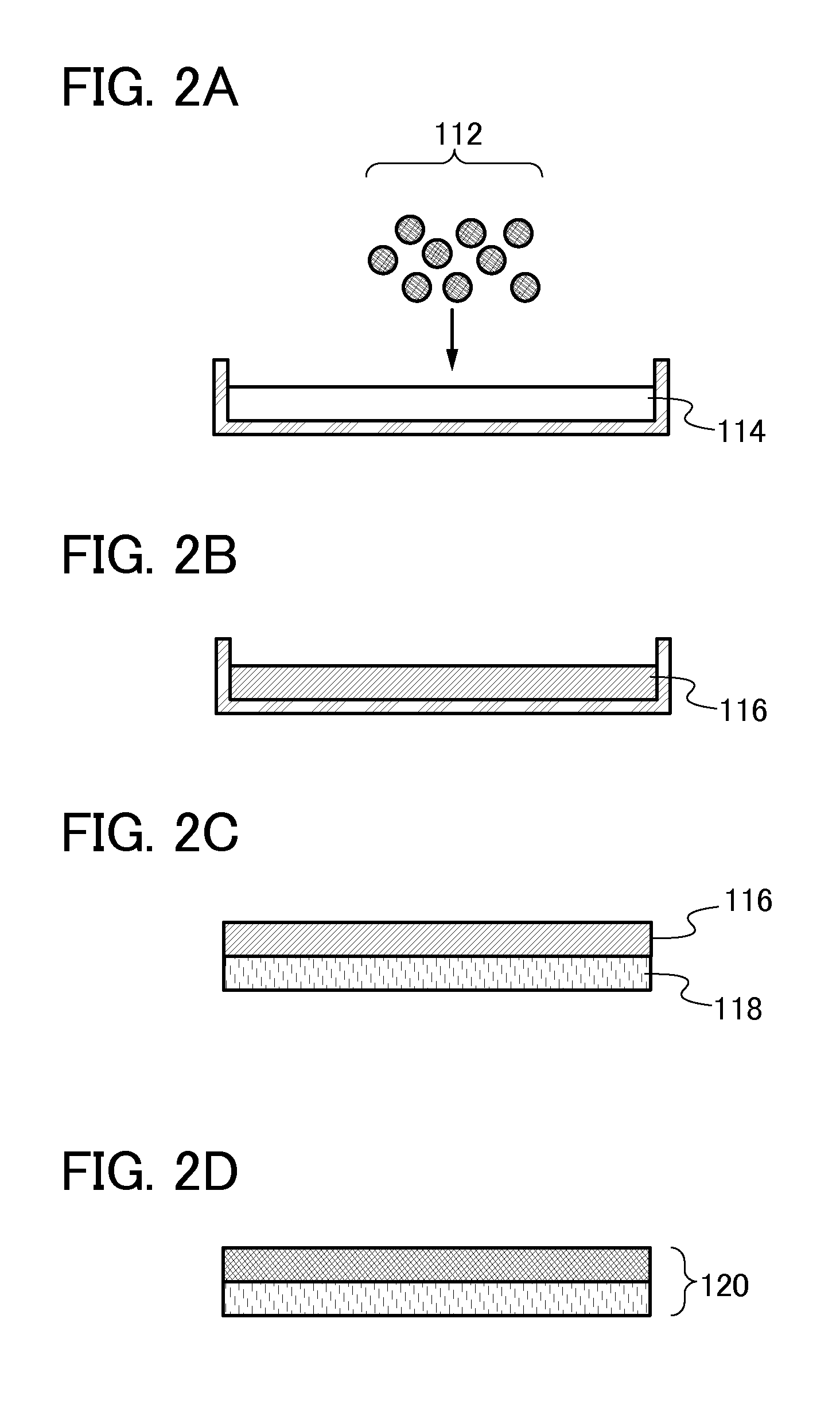Manufacturing method of secondary particles and manufacturing method of electrode of power storage device
a manufacturing method and technology of secondary particles, applied in the direction of non-metal conductors, cell components, conductors, etc., can solve the problems of difficult to increase the power storage capacity per battery, difficult to form an active material layer thick, etc., to achieve the effect of increasing the occupancy of the active material in the current path, reducing the conductivity of the active material layer itself, and low conductivity
- Summary
- Abstract
- Description
- Claims
- Application Information
AI Technical Summary
Benefits of technology
Problems solved by technology
Method used
Image
Examples
embodiment 1
[0026]In this embodiment, a manufacturing method of secondary particles which is one embodiment of the present invention and a manufacturing method of an electrode of a power storage device using the secondary particles will be described with reference to drawings. Note that, in this embodiment, “primary particles”, a counterpart of secondary particles, are active material powders.
[0027]First, a method for manufacturing secondary particles is described. Active material powders 100 and oxidized conductive material powders 102 are mixed with a dispersion medium 104, so that a first slurry 106 is formed (FIGS. 1A and 1B).
[0028]Examples of the material for the active material powders 100 include lithium iron phosphate, lithium manganese silicate, and lithium titanate. Lithium iron phosphate, lithium manganese silicate, and lithium titanate have low conductivity. However, after mixing active material powders and oxidized conductive material powders, reduction in diameter is performed, th...
embodiment 2
[0053]In this embodiment, a power storage device using the electrode obtained by the manufacturing method described in Embodiment 1 will be described taking a lithium-ion secondary battery as one example. FIG. 3 is a schematic cross-sectional view of a lithium-ion secondary battery of this embodiment.
[0054]In the lithium-ion secondary battery illustrated in FIG. 3, a positive electrode 202, a negative electrode 207, and a separator 210 are provided in a housing 220 which is isolated from the outside, and an electrolyte solution 211 is filled in the housing 220. The separator 210 is provided between the positive electrode 202 and the negative electrode 207.
[0055]In the positive electrode 202, a positive electrode active material layer 201 is provided in contact with a positive electrode current collector 200. In this specification, the positive electrode active material layer 201 and the positive electrode current collector 200 over which the positive electrode active material layer ...
example
[0069]In this example, an example of the method for manufacturing an electrode, which is described in Embodiment 1, is described.
[0070]As the active material powders 100, lithium iron phosphate powders were used.
[0071]As the oxidized conductive material powders 102, graphene oxide powders were used.
[0072]As the dispersion medium 104, NMP was used.
[0073]First, the lithium iron phosphate powders and the graphene oxide powders, where the weight ratio was 91.4:8.6, were mixed with water to form the first slurry 106. Then, the first slurry 106 is dried in an atmosphere where the pressure is lower than or equal to 0.01 MPa and the temperature is 100° C. to form the dried substance 108.
[0074]Next, the dried substance 108 was ground to form the powder mixture 110, the powder mixture 110 was reduced in an atmosphere where the pressure is lower than or equal to 0.01 MPa and the temperature is 300° C. to form the secondary particles 112, and secondary particles whose particle sizes were approx...
PUM
| Property | Measurement | Unit |
|---|---|---|
| particle sizes | aaaaa | aaaaa |
| particle sizes | aaaaa | aaaaa |
| particle size | aaaaa | aaaaa |
Abstract
Description
Claims
Application Information
 Login to View More
Login to View More - Generate Ideas
- Intellectual Property
- Life Sciences
- Materials
- Tech Scout
- Unparalleled Data Quality
- Higher Quality Content
- 60% Fewer Hallucinations
Browse by: Latest US Patents, China's latest patents, Technical Efficacy Thesaurus, Application Domain, Technology Topic, Popular Technical Reports.
© 2025 PatSnap. All rights reserved.Legal|Privacy policy|Modern Slavery Act Transparency Statement|Sitemap|About US| Contact US: help@patsnap.com



